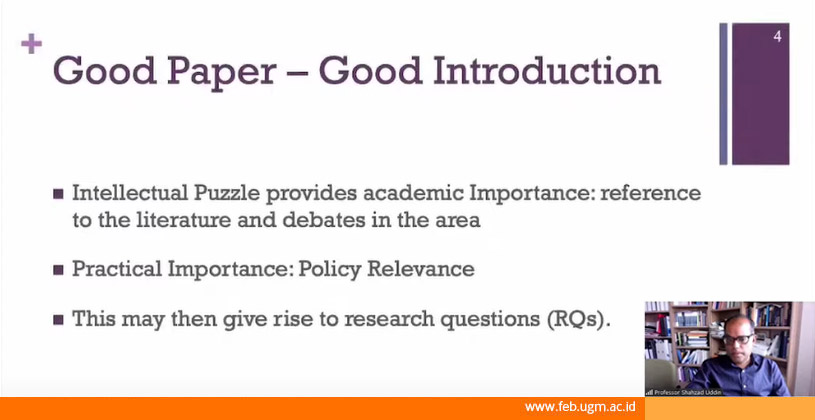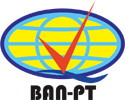Guidelines and Insights for Publishing Papers in the Top Journals for Early Researchers
- Details
- Written by Kirana
- Category: News
- Hits: 877

Publishing papers in top-ranked journals is something that is quite important, especially at the Faculty of Economics and Business (FEB) UGM. As an institution accredited by international accreditation (AACSB), one of the contributions that FEB UGM needs to make is academic contributions through quality research and teaching. On this basis, the Public Sector Studies and Taxation Laboratory, Department of Accounting, FEB UGM, conducted an International Seminar with the topic “Publishing Papers in Top Journals: Insight from a Top Scholar for Early Career Researchers” on Friday (03/09). This seminar is also the event that begins the series of commemorations of this year's 66th FEB UGM Anniversary.
In this session, Prof. Shahzad Uddin, Ph.D., CFMA., FHEA., a Professor of Accounting from the University of Essex was present as a speaker to share his experiences regarding crafting and publishing papers for top-ranked journals. According to him, actually there is no definite scientific criteria to define what is called a top ranking journal. One way to identify it can be seen through the ranking list of international journals such as ABS, ADBC, SJR, and NSD Journal Ranking Outlet. In his presentation, Prof. Shahzad focuses on discussing tips for writing a good research paper by dissecting its structure from the introduction to the conclusion followed by explaining steps of submitting and publishing it.
According to Prof. Shahzad, to write a good paper, a researcher must focus on contributing to the academic debate which can be stated in the introduction. This may then give rise to research questions that need to be answered. The next section is a literature review. There are several points that Prof. Shahzad emphasized on what should be in it, including identifying key issues, relating them to research questions, demonstrating knowledge of research topics, and distinguishing between facts and opinions.
Another part of the structure of the paper that is no less important is the theoretical framework and research methods. “If a particular theory doesn’t explain the research findings, then change your theory or even change the research question. You can always go back to this part to make sure everything is in line,” explained Prof. Shahzad. Meanwhile, the research method itself is an important part of collecting evidence to answer research questions so that researchers must ensure that they have chosen their research method appropriately.
The final structure of a paper is the discussion and conclusion section. In the discussion section, the researcher should be able to reflect, draw on, and present additional insights from the research findings. The conclusion section should also be kept short and include research contributions that answer the research questions. Do not forget to include the limitations of the study and the implications for future research.
At the end of the presentation Prof. Shahzad discussed further about the stages of submitting papers to publishing it. He explained step by step strategically. He also revealed useful tips and suggestions that can make it easier for researchers to go through the process of preparing their research papers. "So if you have a good paper and follow all these basic instructions, then most likely your paper will be considered for review," he said. To conclude, a good paper should meet several criteria such as having an introduction that contributes to the existing debate, demonstrating the scope of the relevant literature and theory, having a good data set, being able to acknowledge limitations, and identifying potential areas for further research.
Reportage: Kirana Lalita Pristy/Sony Budiarso.


